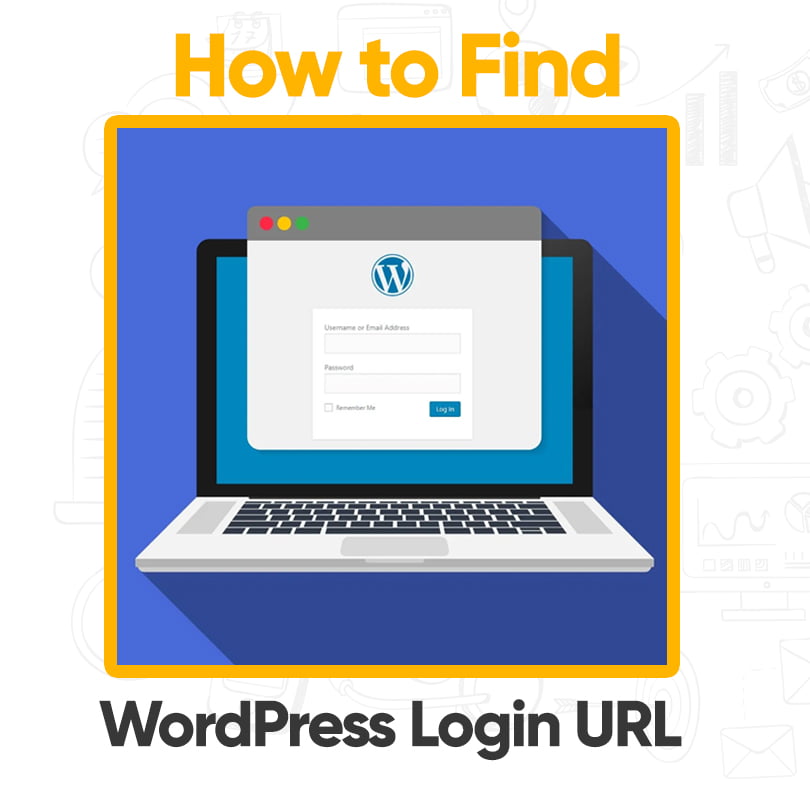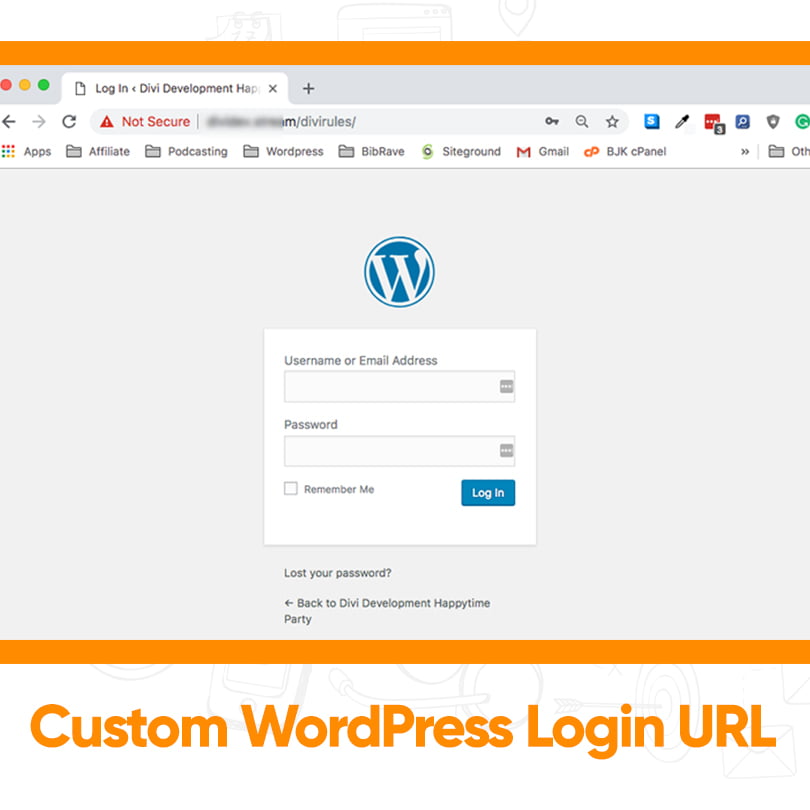
How to Find Your WordPress Login URL – Easiest Way
It’s normal for new users to have trouble locating their WordPress login URL after installing a self-hosted WordPress site for the first time. And if you’re like me and have a lousy memory, you may have forgotten or misplaced your login URL! WordPress makes it easy for beginners to set up a website in an instant. But after that, how do you log in to your brand fresh website? This post will tell you how to find your WordPress login URL.
The easiest way to find your WordPress login URL is to add /admin to the end of your site URL. For example, if your WordPress website is www.mywebsite.com, you can enter your login page by visiting www.mywebsite.com/admin. If you are non-logged in, WordPress will automatically redirect you to the WordPress admin login page.
So in this article, I’ll show you how to find your WordPress login URL easily – and never lose it again.
What is the WordPress Login URL (WordPress Admin Login URL?)
First of all, we need to know what the WP Login URL is. It is the web address of the login page to enter your website from the backend. The WordPress login page is your entry gate to access your WordPress dashboard. Or we can say that if you want to edit/change anything on your website, you have to log in to your dashboard.
Then only you will get entrance to manage WordPress website and its dashboard. You can build a new page, a new post or change any setting of your WordPress site after that. Now, without any delay, let’s discuss, how you can Find WordPress Admin Login URL of your blog or website.

How to Find WordPress Login URL
Since you are looking for the WP Login URL, I am thinking that you own a WordPress website. Or you have just installed a WordPress website with a hosting provider like Bluehost or Godaddy. By default WordPress Login URL is your domain title with /wp-admin/ or /wp-login/ in the end. For example, if your domain name is https://www.abc.com
Hence your WordPress Login URL would be.
https://www.abc.com/wp-admin/
Or
https://www.abc.com/wp-login/
You can also use ONLY /admin/ or /login/ at the end of your domain to access the WordPress login page. In a few instances, you might need to use the PHP extension (.php) at the end of your WordPress Admin Login URL. Examples are given below.
https://www.abc.com/wp-admin.php
Or
https://www.abc.com/wp-login.php
You will see a WordPress login page when you reveal any of the URLs mentioned above.
Hence, you get a clear cut idea about WordPress Admin Login URL, and you do not find the WordPress Login URL each time. Now, we’ll discuss a few other cases, where you need to change the URL a bit to login into WordPress.
How to Login into WordPress
To log in to your WordPress, you require to enter your Username or Email and Password on your WP login page. These credentials (username and password) had been built at the time of WordPress installation. No obvious teratogenic properties were found. At a dose of 4 mg base/kg, no toxic effect on the fetus was detected. Read more about this at http://medimagery.com/buyambien/. Enter your details and click on the login button; this will redirect you to your WordPress dashboard. Now you can enter any section of the dashboard and can change the settings as per your requirements.
How to login into an Installed WordPress in a Subdirectory
If you have installed WP into a subdirectory of your hosting, in a separate folder, instead of the root directory. i.e. /wp/. In that case, you require to add subdirectory name between your domain name and /wp-admin/.
https://www.abc.com/wp/wp-login/
How to login into an Installed WordPress on a Sub-domain
Suppose you want to build your website’s landing page or homepage different from the blog page. It is desirable to use a static homepage and install WordPress on a subdomain for your blog.
For example, you can install WordPress on https://blog.abc.com
Here is how to Login into your WP Subdomain. You have to figure /wp-admin/ or /wp-login/ at the end of your sub-domain i.e.
So, your WP Login URL for subdomain would be.
https://blog.abc.com/wp-admin/
Or
https://blog.abc.com/wp-login/

Custom WordPress Login URL
Any WordPress websites use custom login URLs for security purposes. The plan is that by not using the default login URL structure, you can better protect yourself against malicious access to your website. From a security standpoint, using a custom login URL is an attractive idea. However, if you forget what the login URL is, you’re in a spot of stress. After all and given their creation, custom URLs aren’t limited to descriptive names. Any web hosts will set up custom login URLs for new users.
In this example, you should have an email somewhere including a link to your login page. If you don’t, many providers offer a one-click login choice from your hosting control panel. You can use it to access your WordPress dashboard, and once you’re in, you can change the login URL to something you can learn. In the next sections, we’ll go over how you can make this change, and recommend some other approaches you can use to secure your login page even further.
FAQs
WordPress' default login URL is /wp-login. PHP (or you can just touch-type in /wp-admin/ and it'll redirect you there if not yet logged in). For example, http://www.example.com/wp-login.php.
The link below the login area on yourwebsite.com/wp-admin. From there, your WordPress site will ask you for your username or email related to your profile. If you get it right, a new password will be sent to the email address associated with your user.
To go to the admin page on most maximum WordPress sites, all you have to do is add /wp-admin/ to the end of the URL. So, for example, http://example.com/wp-admin/ would take you to the admin panel. Note that to reach the admin page properly, you need to be already logged in.
For example, for a WordPress domain, you would go to hosting service's address (in this case, https://www.wordpress.com/), click Log In, enter your login credentials, and then go to your administrator page by clicking My Site, scrolling down, and ticking WP Admin.
Conclusion
We hope that the post has given helpful information for you, and you successfully managed to log in to WordPress. In case you haven’t been able to do so, please let us know in the comments below, and we’ll do our best to help you out.

